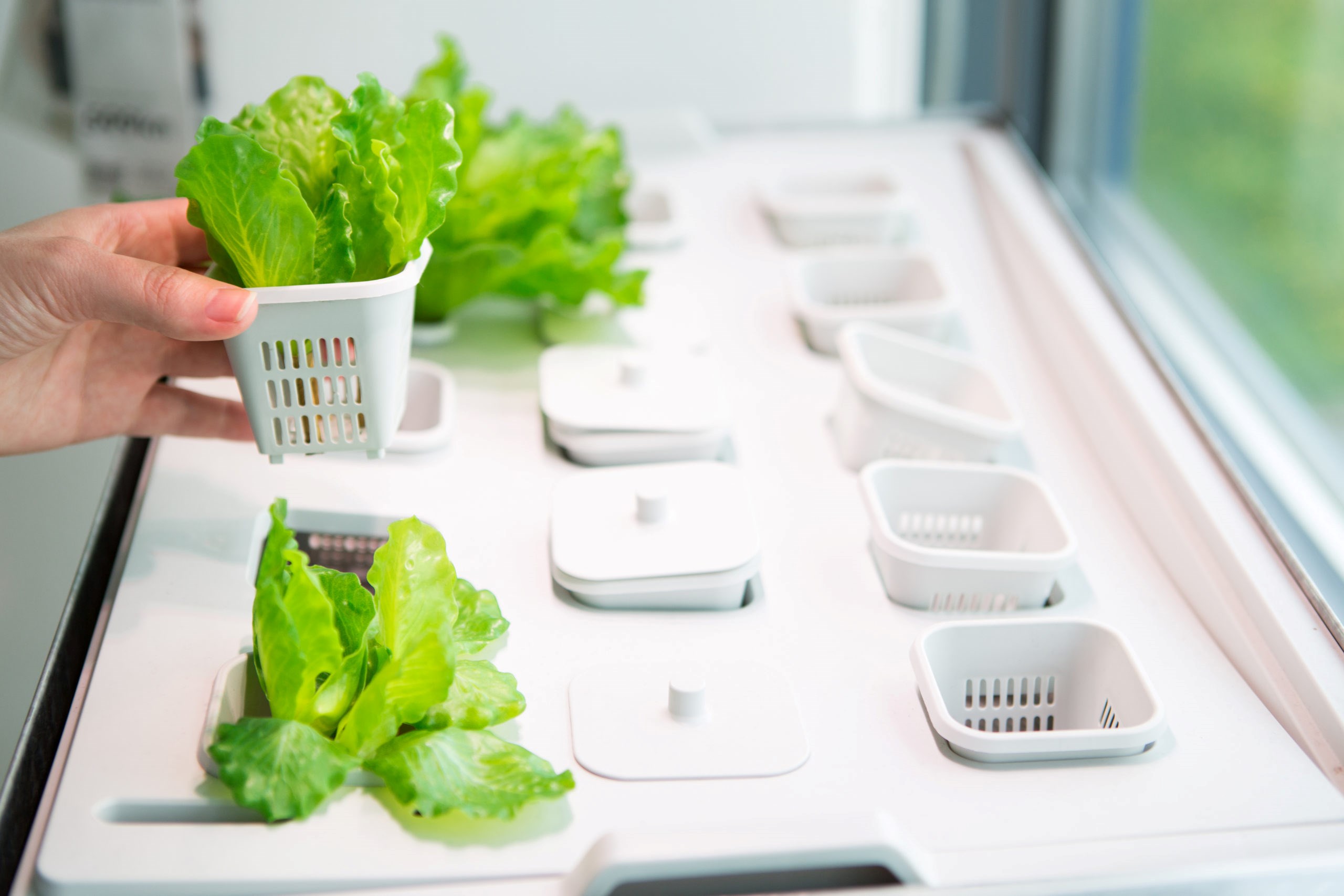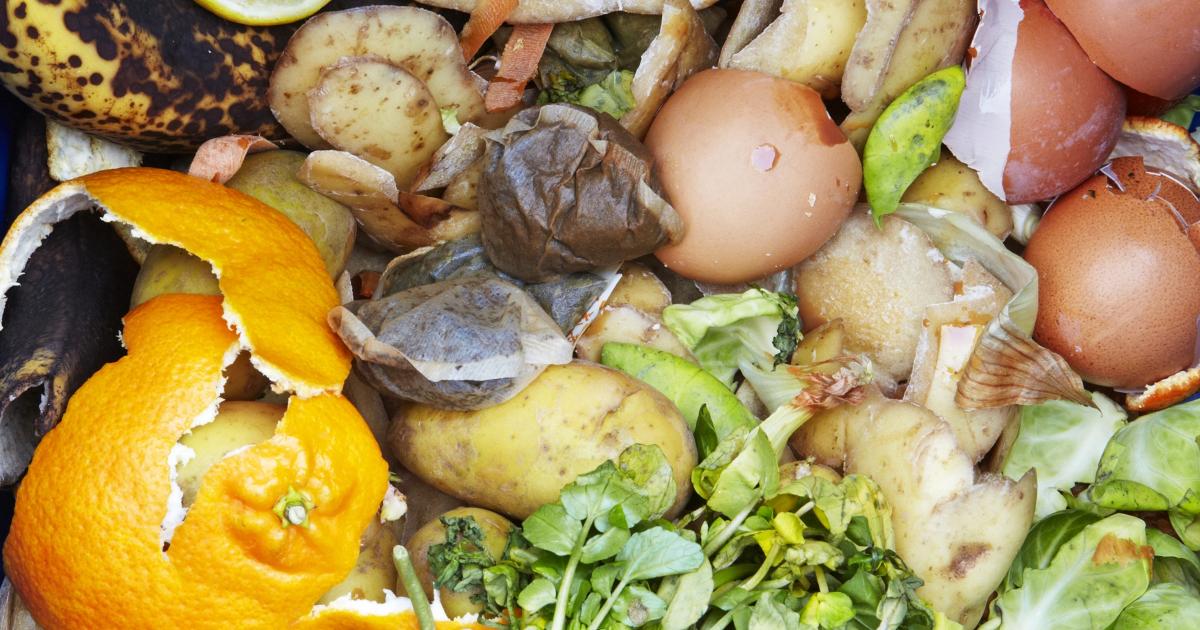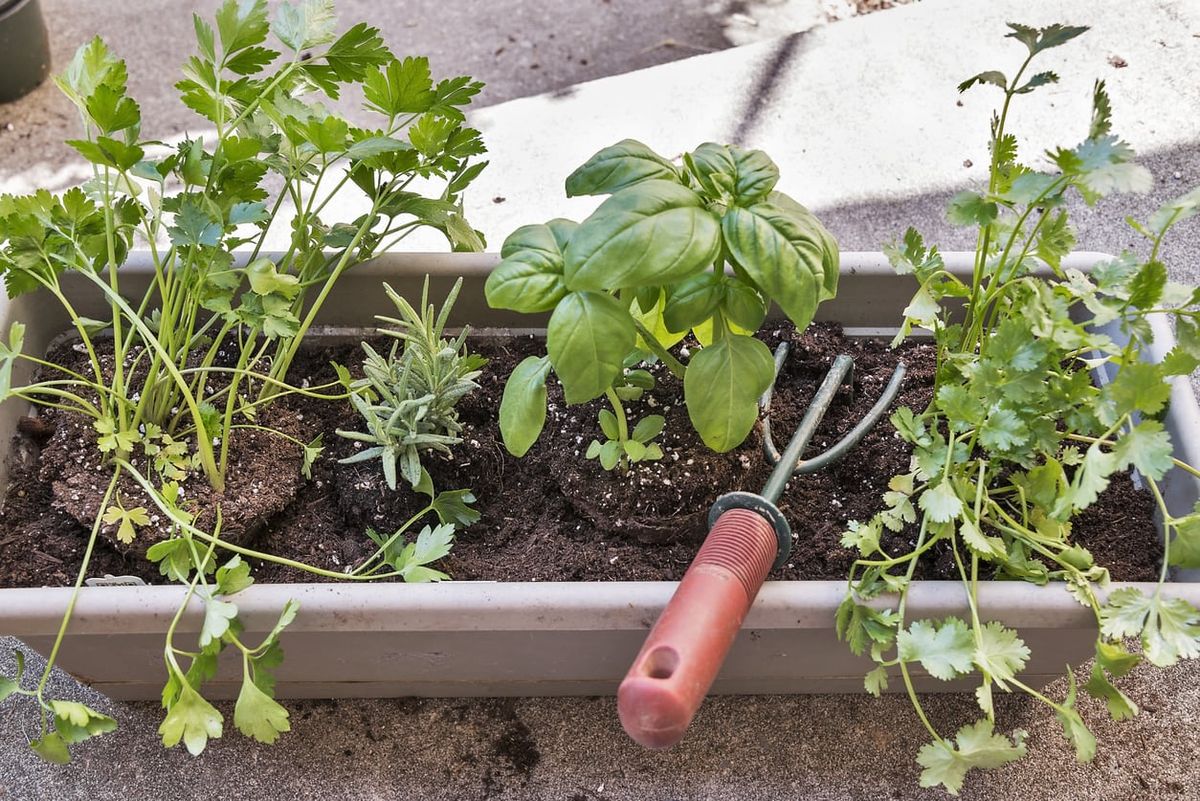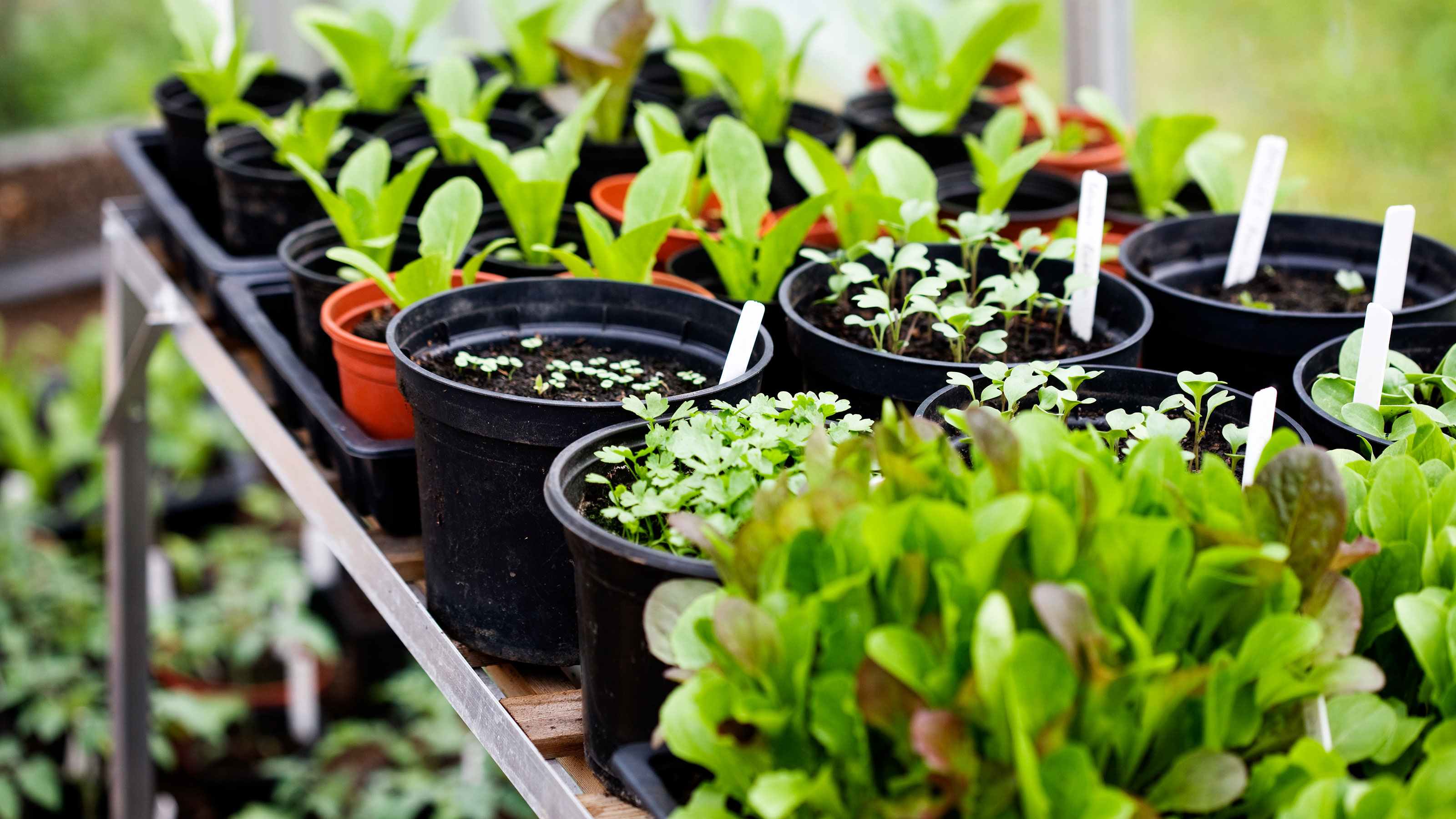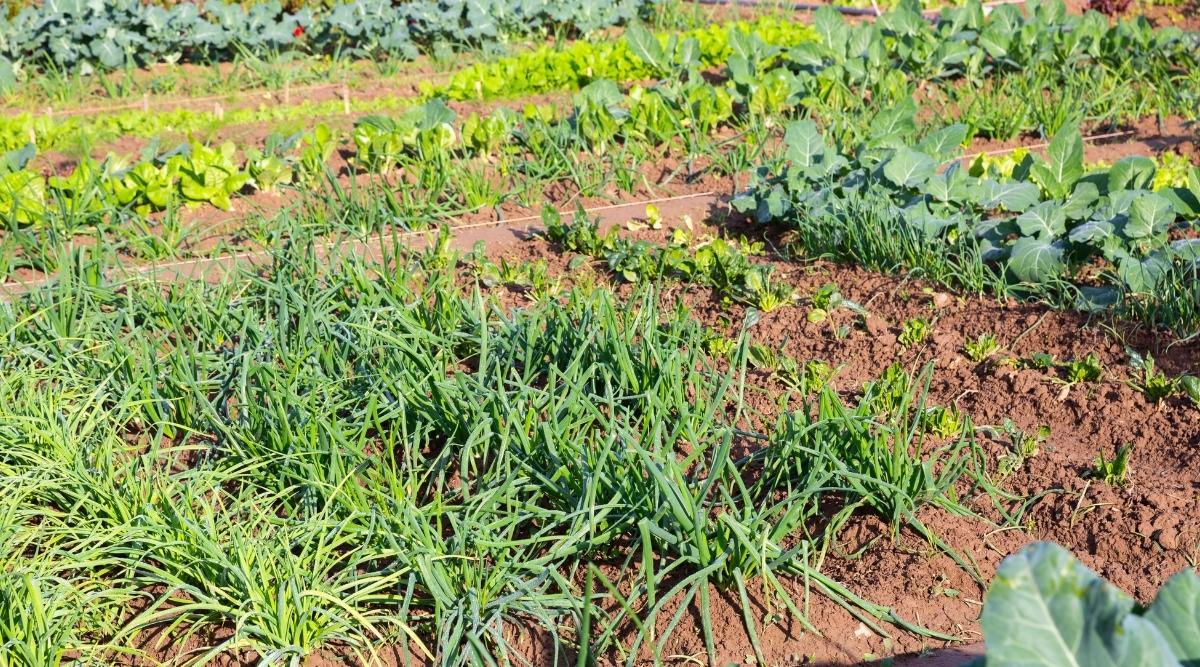Home>Gardening Tips and Tricks>Eco-Friendly Gardening>What Can I Grow With Hydroponics
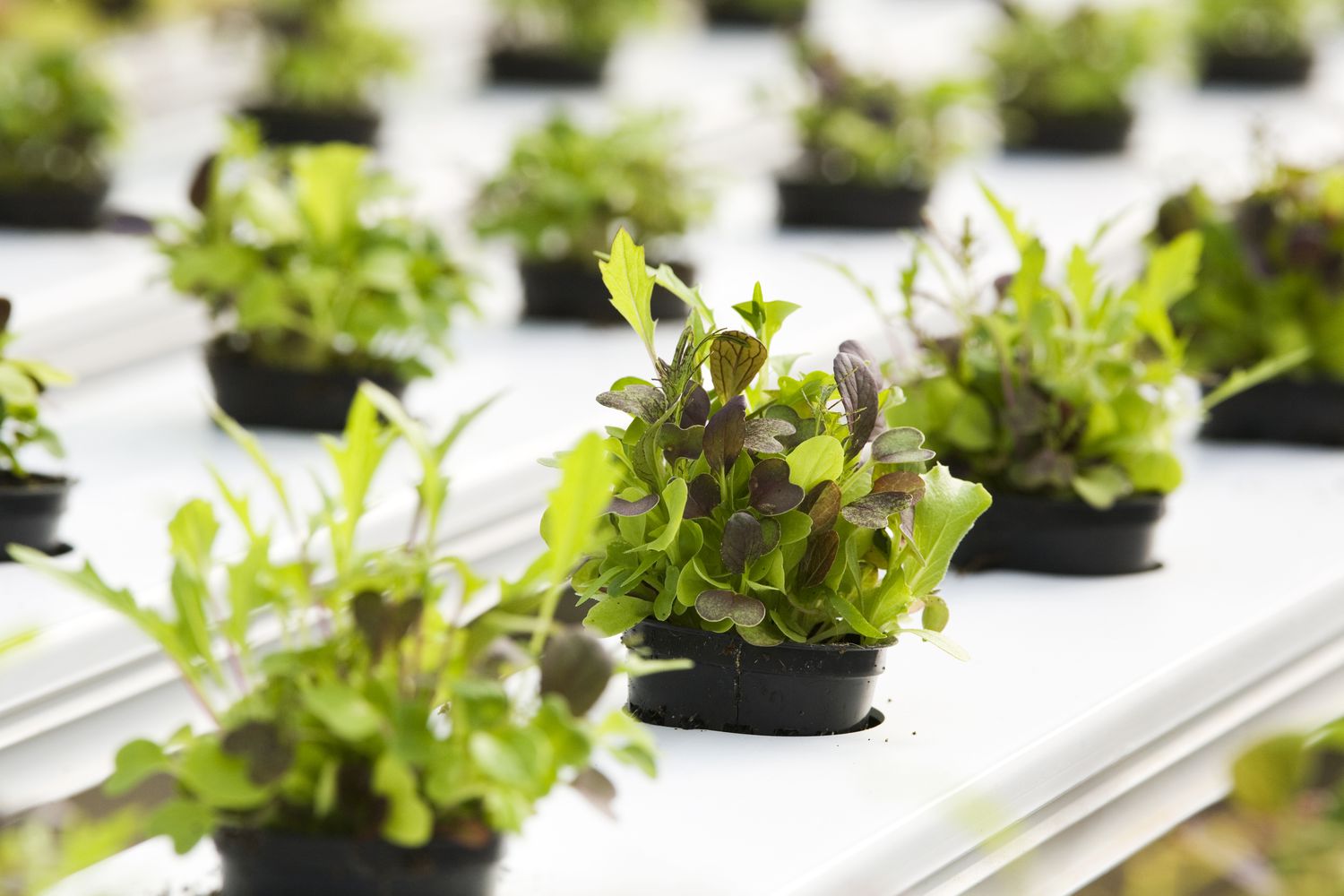

Eco-Friendly Gardening
What Can I Grow With Hydroponics
Modified: January 22, 2024
Discover the benefits of eco-friendly gardening with hydroponics. Learn what plants you can grow using this sustainable method for growing your own produce.
(Many of the links in this article redirect to a specific reviewed product. Your purchase of these products through affiliate links helps to generate commission for Chicagolandgardening.com, at no extra cost. Learn more)
Table of Contents
Introduction
Welcome to the world of hydroponics, a groundbreaking gardening method that has gained popularity in recent years. Whether you have limited outdoor space, unfavorable soil conditions, or simply want to explore a more sustainable approach to gardening, hydroponics offers an eco-friendly and efficient solution. By growing plants in nutrient-rich water rather than soil, hydroponics allows you to cultivate a wide variety of fruits, vegetables, and herbs indoors or outdoors, regardless of the climate or season.
The word “hydroponics” comes from the Greek words “hydro” (meaning water) and “ponos” (meaning labor). This ingenious cultivation method harnesses the power of water by providing plants with the essential nutrients they need, delivered directly to their roots. With hydroponics, you can experience faster growth rates, higher yields, and better control over environmental factors such as light, temperature, and humidity.
One of the greatest benefits of hydroponics is its ability to conserve water. Traditional soil-based gardening requires large amounts of water to nourish plants and prevent evaporation. In contrast, hydroponic systems recirculate water, allowing plants to absorb only what they need, resulting in significant water savings. Furthermore, the absence of soil eliminates the risk of soil-borne diseases and pests, reducing the need for pesticides and fertilizers.
Another advantage of hydroponics is its versatility. Whether you live in a small apartment, an urban area, or a region with harsh weather conditions, hydroponics offers a viable solution for cultivating a thriving garden. With the use of vertical gardens, hydroponic towers, or hydroponic systems installed indoors or on rooftops, you can maximize your growing space and enjoy a bountiful harvest year-round. Moreover, hydroponics allows for precise control over nutrient levels, pH balance, and lighting conditions, enabling you to tailor the growing environment to the specific needs of your plants.
In the following sections, we will delve deeper into the world of hydroponics, providing insights into choosing the right plants, understanding nutrient requirements, setting up a hydroponic system, and overcoming common challenges. By the end of this article, you will be equipped with the knowledge to embark on your hydroponic gardening journey and reap the rewards of this sustainable and efficient gardening method.
Benefits of Hydroponics
Hydroponics offers a wide range of benefits that make it an attractive choice for eco-conscious gardeners. Let’s explore some of the key advantages of using this innovative gardening method:
- Water Efficiency: One of the most significant benefits of hydroponics is its water efficiency. Traditional soil-based gardening can waste a significant amount of water through evaporation and inefficient distribution. In hydroponics, water is recirculated, allowing plants to absorb only what they need, resulting in water savings of up to 90% compared to traditional gardening methods.
- Year-Round Cultivation: With hydroponics, you have the ability to grow plants year-round, regardless of the external weather conditions. By creating a controlled environment, you can mimic the ideal growing conditions for your plants, ensuring optimal growth and continuous harvests throughout the year.
- Higher Yields: Hydroponic systems provide plants with a steady supply of nutrients, eliminating the need for roots to search for nutrients in the soil. This allows the plants to focus their energy on growth and development, leading to faster growth rates and higher yields compared to traditional gardening methods.
- No Soil-Borne Diseases and Pests: Hydroponic gardening eliminates the use of soil, significantly reducing the risk of soil-borne diseases and pests that can damage or kill plants. Without the need for pesticides and herbicides, hydroponics offers a natural and sustainable approach to gardening.
- Maximized Growing Space: One of the advantages of hydroponics is its ability to maximize growing space. The vertical nature of hydroponic systems allows for the cultivation of plants in multiple layers, optimizing space utilization and enabling you to grow more plants in a smaller area.
- Control over Nutrient Levels: Hydroponics gives you precise control over the nutrient levels that your plants receive. By adjusting the nutrient solution, you can ensure that your plants are getting the optimal balance of nutrients to support their growth and development. This control over nutrient levels allows for healthier and more productive plants.
- Sustainable and Eco-Friendly: Hydroponics is an eco-friendly gardening method that minimizes water waste and eliminates the use of harmful chemicals such as pesticides and herbicides. By reducing the carbon footprint associated with traditional agriculture, hydroponics offers a sustainable and environmentally conscious approach to growing your own food.
As you can see, hydroponics offers numerous advantages that make it an enticing option for gardeners of all experience levels. Whether you’re an urban dweller with limited space or a gardening enthusiast looking to improve yields and conserve resources, hydroponics provides a solution that is both efficient and environmentally friendly.
Choosing the Right Plants
When it comes to hydroponic gardening, selecting the right plants is crucial for a successful and productive harvest. While the majority of plants can be grown hydroponically, certain plants thrive better in this nutrient-rich water environment. Here are a few factors to consider when choosing plants for your hydroponic garden:
- Growth Characteristics: Choose plants that have a relatively short growth cycle and higher yields. Fast-growing leafy greens, such as lettuce, spinach, and kale, are popular choices for hydroponic systems. Herbs like basil, cilantro, and mint also grow exceptionally well in a hydroponic setup.
- Space Requirements: Take into account the space requirements of different plants. Some plants, like tomatoes or cucumbers, require more vertical or sprawling space to grow. If you have limited vertical space, consider vine crops that can be trained to grow vertically, such as beans or peas.
- Water and Nutrient Requirements: Each plant has specific water and nutrient requirements. Choose plants that have similar needs to make it easier to maintain the appropriate nutrient solution for your hydroponic system. Avoid mixing plants with drastically different pH or nutrient needs in the same system.
- Tolerance to Environmental Factors: Consider the environmental conditions in your hydroponic setup, such as temperature and humidity levels. Select plants that are well-suited to the conditions you can provide. Some plants, like lettuces and herbs, thrive in cooler temperatures, while others, like peppers and herbs, prefer warmer conditions.
- Personal Preference: Don’t forget to choose plants that you enjoy eating or using in your culinary creations. Hydroponics allows you to grow a wide variety of crops, so experiment with different plants and flavors to find what suits your taste buds best.
Remember that experimentation is key to finding the right plants for your hydroponic garden. Start with a selection of plants that are known to do well in hydroponic systems, and then gradually expand your repertoire as you gain experience and confidence. Keep track of your successes and challenges to refine your choices in the future.
By carefully selecting plants that align with your space, requirements, and preferences, you can ensure a thriving and productive hydroponic garden that will provide you with fresh, nutritious, and pesticide-free produce all year round.
Nutrients and Growing Medium
Nutrition is a vital aspect of successful hydroponic gardening. Unlike traditional soil-based gardening, where plants extract nutrients from the soil, hydroponic plants rely on nutrient solutions to provide them with the necessary elements for growth. Additionally, the growing medium plays a crucial role in supporting the plant’s roots and holding the nutrients. Here’s what you need to know about nutrients and growing mediums in hydroponics:
Nutrient Solutions:
The nutrient solution is a mixture of essential elements that plants need to grow, including macronutrients (such as nitrogen, phosphorus, and potassium) and micronutrients (such as iron, zinc, and manganese). These nutrients are dissolved in water and provided directly to the plant roots. Preparing a well-balanced nutrient solution is essential for promoting healthy plant growth and maximizing yields.
There are different types of nutrient solutions available in the market, including liquid concentrates or powders that need to be dissolved in water. These products generally come with specific instructions for mixing ratios and application rates. It’s important to regularly test the pH and electrical conductivity (EC) levels of the nutrient solution to ensure they are within the optimal range for your plants.
Growing Mediums:
In hydroponics, the growing medium serves as a support structure for the plants’ roots and facilitates the distribution of moisture and nutrients. Commonly used growing mediums include:
- Coco Coir: Made from coconut husks, coco coir is a popular choice for hydroponic systems. It provides excellent water retention and aeration, promoting healthy root development.
- Rockwool: This lightweight and porous material is made from molten rock spun into fibers. Rockwool retains moisture and provides good air circulation around the roots. It comes in various shapes and sizes, such as cubes or slabs, making it versatile for different hydroponic setups.
- Perlite and Vermiculite: Perlite and vermiculite are lightweight materials used to improve soil aeration and retain moisture. They are often mixed with other growing mediums to enhance their water-holding capacity.
- Hydroton/Expanded Clay Pebbles: These lightweight and inert clay pellets provide excellent drainage and support for plants. They are reusable and have good air circulation properties.
- Nutrient Film Technique (NFT) Systems: NFT systems use a thin film of nutrient solution flowing over the roots without a growing medium. This allows the roots to have direct access to water and nutrients while being exposed to air.
The choice of growing medium depends on factors such as the type of plants you are growing, the nutrient solution you are using, and the specific requirements of your hydroponic system.
Remember to regularly monitor and adjust the nutrient solution and check the moisture levels of your growing medium to maintain optimal growth conditions for your plants. Understanding the importance of nutrients and choosing the appropriate growing medium will help ensure healthy and vigorous plant growth in your hydroponic garden.
Setting up a Hydroponic System
Setting up a hydroponic system may seem daunting at first, but with proper planning and the right equipment, it can be a rewarding and straightforward process. Here are the key steps to consider when setting up your hydroponic system:
- Choose the Type of Hydroponic System: There are several types of hydroponic systems to choose from, including nutrient film technique (NFT), deep water culture (DWC), drip irrigation, and vertical growing systems. Each system has its own advantages and considerations, so research and select the one that best suits your space, budget, and goals.
- Select the Growing Area: Determine the space where you will set up your hydroponic system. It can be indoors, in a greenhouse, or even in a dedicated outdoor area. Consider factors such as available light, temperature control, and access to water and electricity.
- Acquire the Necessary Equipment: Depending on the type of system you’ve chosen, you’ll need equipment such as grow trays, nutrient reservoirs, pumps, air stones, grow lights, timers, and pH and EC meters. Research the specific requirements of your chosen hydroponic system and invest in quality equipment that will ensure optimum plant growth.
- Install the System: Follow the manufacturer’s instructions or consult a hydroponic gardening guide to properly install your system. This may involve assembling the frameworks, connecting tubes and pipes, and securing the grow trays or containers. Ensure that the system is stable and any electrical connections are done safely.
- Prepare the Nutrient Solution: Mix the appropriate amount of nutrients with water to create the nutrient solution. Follow the instructions provided by the manufacturer or conduct a thorough analysis of the needs of your plants. It is important to maintain the correct nutrient levels and pH balance to support healthy growth.
- Transplant or Start Seeds: Once your hydroponic system is set up and the nutrient solution is ready, it’s time to introduce your plants. Depending on your preference, you can transplant seedlings from another gardening system or start seeds directly in your hydroponic setup. Ensure that the roots are properly placed in the growing medium or exposed to the nutrient solution.
- Monitor and Adjust: Regularly monitor the pH and EC levels of the nutrient solution, as well as the temperature and moisture levels of the growing environment. Adjust these parameters as needed to maintain optimal growing conditions for your plants. Also, keep an eye out for any signs of nutrient deficiencies or plant diseases and take appropriate action.
- Harvest and Maintain: As your plants grow, harvest them when they reach their desired maturity. Regularly clean and maintain your hydroponic system to prevent nutrient buildup, algae growth, and pest infestation. Replace the nutrient solution periodically to ensure a fresh supply of nutrients for your plants.
Remember to regularly educate yourself on best practices for your specific type of hydroponic system. Experiment with different crops and growing techniques to find what works best for you. With patience and practice, you can become proficient at setting up and maintaining a productive hydroponic system for all your gardening needs.
Monitoring and Adjusting pH and EC Levels
Monitoring and adjusting the pH and electrical conductivity (EC) levels are crucial tasks in maintaining a healthy hydroponic system. The pH level measures the acidity or alkalinity of the nutrient solution, while the EC level indicates the concentration of nutrients in the solution. Here’s what you need to know about monitoring and adjusting pH and EC levels in your hydroponic system:
Monitoring pH Levels:
The pH level of your nutrient solution plays a vital role in nutrient uptake and plant health. Different plants have different pH preferences, but a general range of 5.5 to 6.5 is suitable for most hydroponic crops. To monitor the pH level, you will need a pH meter or pH test strips specifically designed for use in hydroponics.
Regularly check the pH level of your nutrient solution, ideally daily or every few days. If the pH deviates from the desired range, it needs to be adjusted. To lower the pH, you can add pH down solutions or acidifiers, such as phosphoric acid. To raise the pH, use pH up solutions or alkalis, such as potassium hydroxide. Make small adjustments at a time and retest until you reach the appropriate pH level.
Monitoring EC Levels:
EC, or electrical conductivity, measures the concentration of dissolved minerals and salts in the nutrient solution. It is an indicator of the nutrient strength provided to the plants. EC meters or conductivity pens are used to measure the EC level accurately.
Regularly test the EC level of your nutrient solution to ensure that the nutrients are within the appropriate range for your plants. Each plant has specific nutrient requirements, and different growth stages may call for adjustments. Refer to a plant-specific nutrient schedule or consult with hydroponic experts to determine the ideal EC range for your crops. If the EC level is too high, dilute the nutrient solution with water. If it is too low, add more nutrients to achieve the desired EC level.
Maintaining Stability:
Maintaining stable pH and EC levels is crucial for plant health and optimal nutrient uptake. Fluctuations in pH and EC can lead to nutrient deficiencies or toxicities, affecting plant growth and overall productivity. To maintain stability, consider the following:
- Regularly check and adjust pH and EC levels to keep them within the desired range for your plants.
- Keep track of your nutrient dosages and maintain consistency in nutrient solution preparation.
- Monitor environmental factors such as temperature and humidity, as they can affect pH and EC stability.
- Clean and calibrate your pH and EC meters regularly to ensure accurate readings.
- Use high-quality nutrient solutions and follow recommended guidelines for nutrient application.
By regularly monitoring and adjusting the pH and EC levels, you can create an optimal growing environment for your hydroponic plants. Remember, maintaining stability is key to ensuring healthy growth, maximizing yields, and ultimately achieving success in your hydroponic gardening endeavors.
Lighting and Temperature Requirements
Lighting and temperature are key factors that can significantly influence the growth and development of plants in a hydroponic system. Providing the right amount of light and maintaining suitable temperature levels is essential for healthy plant growth and maximizing yields. Here’s what you need to know about lighting and temperature requirements for your hydroponic garden:
Lighting Requirements:
Since hydroponic plants are not exposed to natural sunlight, it is necessary to provide them with artificial lighting that mimics the sun’s spectrum. Plants require different light wavelengths at various stages of growth. Generally, blue light promotes vegetative growth, while red light supports flowering and fruiting. Most commercially available LED grow lights offer a full spectrum to cater to all growth stages of the plants.
Consider the following when it comes to lighting in your hydroponic system:
- Light Intensity: Different plants have varying light intensity requirements. Leafy greens, such as lettuce and spinach, can thrive with lower light levels, while fruiting plants, such as tomatoes and peppers, require higher light intensity. Make sure to adjust the distance between the plants and the grow lights to achieve the optimal light intensity for each crop.
- Light Duration: Most plants require around 14-16 hours of light per day during the vegetative stage and 10-12 hours during the flowering or fruiting stage. Use timers to automate the lighting schedule and ensure consistent light exposure for your plants.
- Light Positioning: Proper positioning of the grow lights is vital to ensure uniform light distribution and prevent the shading of plants. Consider using reflectors or rotating the trays to expose all sides of the plants to the light source evenly.
Temperature Requirements:
Temperature plays a crucial role in plant growth and metabolism. Each plant has its preferred temperature range, but most hydroponic crops thrive in temperatures between 65°F (18°C) and 75°F (24°C) during the day and slightly cooler temperatures at night. Here are some considerations for maintaining suitable temperatures in your hydroponic system:
- Air Temperature: Ensure that the ambient air temperature in your growing area is within the optimal range for your plants. Use thermometers or temperature controllers to monitor and adjust the temperature if needed.
- Root Zone Temperature: The temperature of the nutrient solution should be maintained within a range that promotes healthy root growth. Most plants prefer a root zone temperature between 60°F (15°C) and 68°F (20°C). Use water heaters or coolers to regulate the temperature of the nutrient solution, particularly in outdoor or greenhouse setups.
- Air Circulation and Ventilation: Proper air circulation and ventilation are essential to prevent excessive heat buildup and maintain a conducive growing environment. Use fans or exhaust systems to promote airflow and prevent stagnant air that can lead to temperature imbalances.
Remember to regularly monitor and adjust lighting and temperature levels as needed. Additionally, consider the specific requirements of the plants you are cultivating to ensure optimal growth and productivity in your hydroponic garden.
Harvesting and Maintenance
Harvesting and maintenance are crucial components of a successful hydroponic garden. Regular care and attention will ensure that your plants remain healthy and productive throughout their growth cycle. Here are some important considerations for harvesting and maintaining your hydroponic system:
Harvesting:
One of the joys of hydroponic gardening is being able to enjoy fresh, homegrown produce all year round. Here’s how to ensure a successful harvest:
- Monitoring Maturity: Keep a close eye on your plants and monitor them daily to determine the right time for harvest. Each plant has its own set of indicators, such as size, color, or taste, to determine when it is ready to be harvested. Harvest leafy greens by selectively picking the outer leaves, taking care not to damage the central growth point. For fruiting plants, wait until the fruits reach their desired size and color.
- Proper Harvesting Techniques: Use clean and sterilized tools to harvest your plants to prevent the spread of diseases or pests. Cut leafy greens close to the base of the plant, and use scissors or pruners to harvest fruits or vegetables. Handle the harvested produce gently to minimize damage.
- Continuous Harvesting: In a hydroponic system, the ability to harvest continuously is a significant advantage. As you harvest mature plants, replant or sow new seeds to maintain a continuous supply of fresh produce.
Maintenance:
Maintaining your hydroponic system is essential for its long-term success. Here are some maintenance tasks to prioritize:
- Cleaning and Sanitizing: Regularly clean and sanitize your hydroponic system to prevent the buildup of algae, bacteria, or other pathogens. Empty and clean the nutrient reservoir, remove any debris from the growing trays, and sanitize all equipment to ensure a healthy growing environment.
- Reservoir and Nutrient Solution Maintenance: Replace the nutrient solution at regular intervals to prevent nutrient imbalances or the buildup of salts. Monitor the reservoir for any signs of contamination or nutrient deficiencies and adjust accordingly.
- Pest and Disease Control: Monitor your plants for any signs of pests or diseases. Inspect the leaves, stems, and roots regularly and take immediate action at the first sign of infestation or infection. Use organic pest control methods or apply appropriate treatments to prevent the spread of pests or diseases.
- Equipment Maintenance: Regularly inspect and maintain all equipment, including pumps, filters, grow lights, and timers, to ensure proper functioning. Clean or replace any worn-out or malfunctioning components to avoid disruptions in your hydroponic system.
- Record Keeping: Keep a record of your gardening activities, including planting dates, nutrient schedules, and any adjustments or observations made. This information will help you analyze and improve your hydroponic practices over time.
By following proper harvesting techniques and maintaining your hydroponic system, you can ensure a continuous supply of fresh, healthy produce while maximizing the longevity and productivity of your garden.
Common Challenges in Hydroponics
While hydroponics offers numerous benefits, it also comes with its own set of challenges. Understanding and addressing these challenges will help you overcome any hurdles that may arise in your hydroponic gardening journey. Here are some common challenges in hydroponics and how to tackle them:
1. Nutrient Imbalances:
Ensuring the right balance of nutrients is crucial for optimal plant growth. Imbalances can lead to nutrient deficiencies or toxicities, resulting in stunted growth or damage to plants. Regularly monitor and adjust the pH and EC levels of your nutrient solution, avoid overfeeding or underfeeding your plants, and follow recommended nutrient schedules specific to your crops.
2. Pests and Diseases:
Just like in traditional gardening, hydroponic systems are not immune to pests and diseases. Common offenders include aphids, spider mites, and fungal infections. Regularly inspect your plants for any signs of pests or diseases and take prompt action. Introduce natural predators, use organic pest control methods, or apply appropriate treatments to prevent the spread of pests or diseases.
3. Temperature and Humidity Control:
Maintaining the ideal temperature and humidity levels can be challenging, especially in indoor or greenhouse hydroponic setups. Improper temperature can lead to plant stress, stunted growth, or increased susceptibility to diseases. Use temperature and humidity controllers, fans, and ventilation systems to regulate climate conditions and ensure proper air circulation.
4. Root Rot and Waterborne Pathogens:
Root rot and waterborne pathogens can pose a serious threat to hydroponic plants, especially if there is insufficient oxygenation or poor circulation in the root zone. Choose a suitable growing medium that promotes drainage and aeration, avoid overwatering, and regularly clean and sanitize your system to prevent the growth of harmful pathogens.
5. pH Fluctuations and pH Drift:
pH fluctuations or drift can negatively impact nutrient uptake by the plants, leading to nutrient deficiencies or toxicities. Monitor the pH levels regularly and make small adjustments as needed. Use pH stabilizers or buffers to prevent abrupt pH fluctuations and maintain the desired pH range.
6. Equipment Malfunction:
Equipment malfunctions can disrupt the functioning of your hydroponic system and jeopardize plant health. Regularly inspect and maintain all equipment to ensure proper functionality. Clean or replace worn-out or malfunctioning components, and have spare parts readily available to minimize downtime.
7. Lack of Experience or Knowledge:
Hydroponics can be challenging for beginners who are unfamiliar with the intricacies of this gardening method. Lack of experience or knowledge can result in mistakes or suboptimal plant growth. Invest time in learning about hydroponics through research, attending workshops, or joining online communities. Start small, experiment, and gradually expand your knowledge and skills.
By being aware of these common challenges and implementing appropriate strategies, you can overcome them and enjoy a successful hydroponic garden. Remember, challenges are part of the learning process, and with practice and persistence, you can master the art of hydroponic gardening.
Conclusion
Hydroponic gardening offers a sustainable and efficient way to cultivate plants in a controlled environment, regardless of limited space or unfavorable soil conditions. By harnessing the power of water and providing plants with the precise nutrients they need, hydroponics allows for faster growth rates, higher yields, and year-round cultivation.
Throughout this article, we have explored the various benefits of hydroponics, including water efficiency, maximized growing space, and the ability to grow a wide range of plants without the need for pesticides or herbicides. We have also discussed the importance of selecting the right plants, understanding nutrient requirements, setting up a hydroponic system, and maintaining optimal pH and EC levels.
In addition, we have highlighted the significance of proper lighting and temperature control in achieving healthy plant growth and maximizing productivity. Finally, we have touched on common challenges in hydroponics, such as nutrient imbalances, pests and diseases, and equipment malfunctions, and provided strategies to overcome them.
As you venture into the world of hydroponic gardening, remember that success will come with experimentation, observation, and continuous learning. With patience and dedication, you can create a thriving and sustainable hydroponic garden that will provide you with fresh and nutritious produce throughout the year.
So, why wait? Start your hydroponic gardening journey today and experience the joy of growing your own food in an environmentally-friendly and efficient manner.
